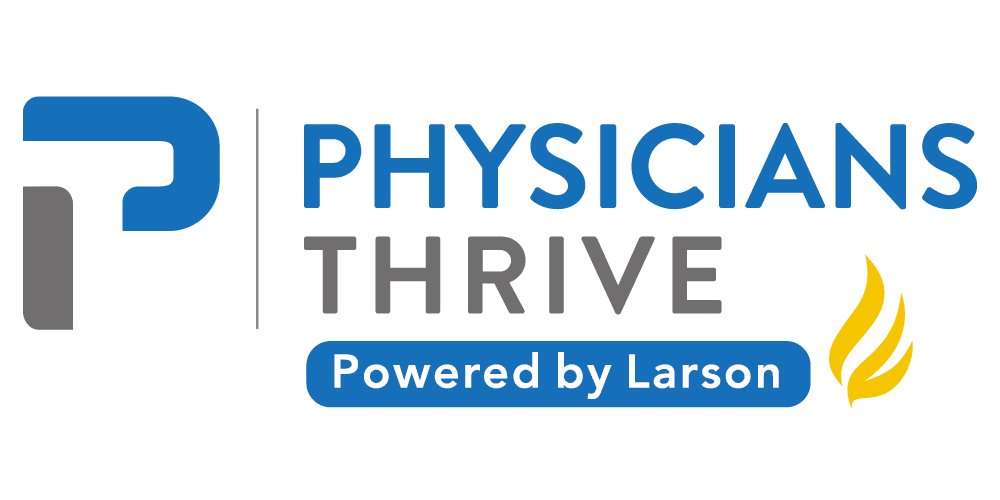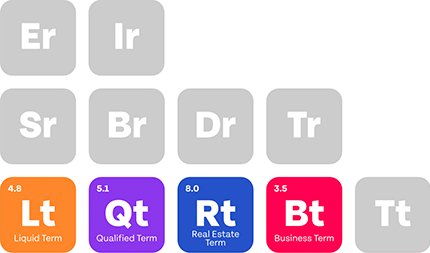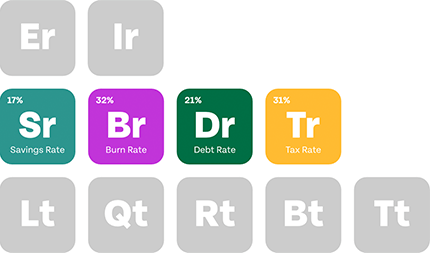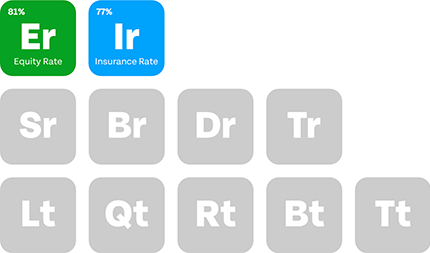According to a 2024 survey by Tebra, nearly half of all patients look at online reviews before picking a doctor, and one in three judge your care quality based on your website.
If your practice doesn’t show up online—or worse, show up with poor reviews or a clunky site—you’re already losing patients before they ever call your office.
This is where search engine optimization (SEO) helps.
Healthcare SEO increases your visibility in search engine results and brings the right patients to your website.
But it comes with strict regulations around sensitive content and a non-traditional buyer journey.
Read on to learn what SEO services for doctors involve and which ones make the biggest impact.
Key Takeaways
- Healthcare SEO improves doctors’ visibility in patient search results online.
- Google’s YMYL guidelines require medical sites to maintain high credibility.
- Local SEO ensures your medical practice appears for nearby patients.
- High-quality backlinks from trusted medical sources boost website authority.
Table of Contents
What Is Healthcare SEO?
Medical SEO refers to strategies that improve your medical practice’s visibility in search engines like Google, ensuring your practice appears prominently when patients search for symptoms, treatments, or doctors in your area.
For example, if someone searches for “dermatologist near me accepts Medicare” or “best treatment for sleep apnea Austin,” SEO helps your website or Google Business Profile appear as one of the first pages in the results.
What Makes Healthcare SEO Different
Unlike general SEO, SEO for doctors is subject to tighter scrutiny, both from search engines and regulators. If you’ve just bought a medical practice and are ready to publish medical marketing content, know that what works for a restaurant or retail store won’t work for your business.
Here’s a breakdown of the differences:
1. It Falls Under Google’s YMYL Guidelines
If your website contains advice, treatment options, or provider recommendations, it directly impacts a person’s health, safety, finances, or life decisions. It influences whether they seek care, take medication, ignore symptoms, or make mistakes that could lead to serious harm.
That’s why Google classifies it as “Your Money or Your Life” (YMYL) content.
YMYL pages are held to Google’s highest standard of accuracy and credibility. If your content doesn’t meet those expectations, it may not rank well.
To meet YMYL guidelines, your website has to:
- Have content written or reviewed by licensed medical professionals
- Provide advice based on current medical evidence, guidelines, or peer-reviewed sources
- Have disclaimers, clear contact information, and easy-to-find expert credentials
2. Regulatory Compliance Impacts What You Can Say
Many industries can promote products or services without limitations. But in healthcare, your medical practice will be subject to strict advertising and digital marketing regulations that affect SEO content.
HIPAA regulations will limit your ability to use patient information to promote your services, even if the patient volunteers it in a review. This means you may not be able to use patient stories, testimonials, or before-and-after content marketing material, even if these help with conversions.
Similarly, the Stark Law prohibits you from self-referring to companies or other doctors you have a financial relationship with. This affects affiliate content and partnerships, which are also part of SEO.
3. Content Needs to Build Medical Credibility, Not Just Rank
When you’re doing regular SEO, you can build content around current industry trends or search volume. But with healthcare SEO, you need to build trust first. This means your content has to be:
- Factually accurate
- Reviewed or written by a medical professional
- Updated regularly
You will also have to include physician bios, awards, and citations to establish authority. Too simple content may alienate both Google and new patients.
5 SEO Services for Doctors
Here are five SEO services you should consider getting as a doctor:
1. Local SEO
Local SEO helps your practice show up in location-based searches, like “pediatrician near me.” It includes optimizing your Google Business Profile, claiming local citations (your practice info across directories), and encouraging reviews.
When you optimize your local SEO, Google will understand where your practice is located and when to show it to users nearby.
2. On-Page SEO
On-page SEO is when the elements on your website help search engines and users understand what each page is about. This includes title tags, meta descriptions, headers (like H1, H2, and H3), and the way content is structured.
This type of SEO ensures your pages explain what you treat and where you offer care, which helps you rank higher.
3. Link Building
Links from trustworthy sites act like votes of confidence that improve your domain authority, which is a measure of how credible and relevant your website appears to search engines. The higher your authority, the more likely Google is to rank your pages above competing sites.
Link building helps you earn links from other websites to yours, but these have to be high-quality links from reputable sources like hospital networks, medical associations, or educational institutions.
4. Keyword Strategy
Keyword strategy is the plan that mentions which words or phrases patients are typing into Google and how to use those words across your website so you show up in their search results. These words are called keywords, and they help you understand what real people are looking for, like “knee pain specialist in Atlanta.”
Your keyword strategy will organize these keywords based on your services, location, and the questions patients are asking. It will also plan where those keywords will appear, such as on your homepage and service pages, in your blog posts, and in your page titles and headings.
5. Technical SEO
When Google audits your site, it looks at how fast your pages load, how your site is structured, and if there are issues like broken links or missing pages. Technical SEO is the process that makes your website work the way search engines expect it to.
It includes site speed, mobile-friendliness, HTTPS security, clear URL structure, fixing errors like broken links, and structured data, which is the code that helps Google understand your pages.
If there aren’t any problems, Google will index your page (store it in a database) and rank your content. You can use Google Search Console to find out if your pages have been indexed.
6 Healthcare SEO Tactics You Need to Use as a Medical Practice
Let’s say you don’t want to hire an SEO agency. You can still improve your online visibility by self-learning the following strategies:
1. Use Keyword Research to Understand How People Find You
The first thing an SEO specialist will do is identify the terms patients use when searching for conditions you treat, services you offer, and providers in your area.
This starts with seed keywords, which are broad phrases like “dermatologist”, “physical therapy”, or “urgent care.” From there, they may use tools like Google Keyword Planner to find long-tail keywords, which are more specific phrases like “how to tell if it’s a cold or an allergy.”
Long-tail keywords are also easier to rank for because they usually have lower competition but still higher interest.
2. Develop a Content Plan to Create Content Relevant to Your Niche
A content plan helps you turn those keywords you found into useful content. It maps what you will write, how you’ll organize it, and which topics will matter most to your audience.
Your content plan will contain content clusters, each with a pillar page that focuses on one broad topic, like “knee pain treatment.” It will also contain cluster pages that cover specific subtopics, like “ACL injuries” or “knee pain in runners.” All these pages will be connected through internal links.
This structure will show Google that your website covers a topic in detail, which can increase your authority in that area. It will also help patients easily find the information they’re looking for.
3. Make Your Content Comply With E-E-A-T
E-E-A-T stands for experience, expertise, authoritativeness, and trustworthiness. These are four qualities Google uses to decide whether your medical website deserves to rank. Here’s what each means:
- Experience . Have you or your team personally treated the condition or performed the procedure you’re writing about?
- Expertise . Are you qualified to speak on the topic?
- Authoritativeness . Are you recognized as a reliable source? Backlinks from medical sites and affiliations with boards or hospitals could be used here.
- Trustworthiness . Is your site accurate and secure? Does it display contact info and privacy policies?
To meet these standards, you’ll need to include doctor bios with credentials, cite reputable sources, and use HTTPS to secure your website.
4. Optimize Your Google Business Profile
Your Google Business Profile is the first thing your patients see when they search for your name, specialty, or clinic near them.
It appears on Google Search and Google Maps, showing your hours, location, reviews, photos, and contact information.
Google uses this profile to decide which providers show up in the local “map pack”—the top three listings that appear with a map when someone searches for terms like “orthopedic doctor near me.” This makes optimizing your profile essential for local visibility.
Here are a few ways to do that:
- Make sure your practice name, address, and phone number (NAP) are accurate and match your website.
- Add clear photos of your clinic and logo.
- Keep your hours, services, and website URL updated.
- Use keywords in your business description.
- Encourage patients to leave honest reviews.
5. Make Your Website Easy to Use
According to Google’s usability guidelines, good user experience is a ranking factor. This means your website structure, layout, and performance all influence how high you show up in search.
Here’s how your SEO team might make your site easy to use:
- A visible menu that makes navigation easier
- Mobile-friendly design
- Fast load times (less than 2.5 seconds)
- Logical page structure, with clear headings and content grouped by topic
- Front-and-center calls to action
If patients can’t understand or use your site, they’ll leave. Google will track this behavior. When it happens consistently, your website might rank lower.
6. Build Backlinks for Authority
As a medical practice owner, you could source backlinks from:
- Medical directories like WebMD, Healgrades, and Zocdoc
- Local partnerships, sponsorships, or collaborations with businesses or nonprofits to link your site to theirs
- Media coverage, like interviews and contributions to studies or health articles
- Guest articles or expert quotes
- Research contributions, case studies, or published work cited in academic or clinical publications
While having backlinks will increase your chances of ranking, this is not a case of the more, the merrier. A few links from relevant, high-authority websites will do more for your rankings than dozens from low-quality or unrelated sources.
Set Up Your Website for Success With Physicians Thrive
Your next patient is probably searching for you right now. SEO makes sure they find your practice, the right information, on the right page, at the right time. When patients find the right information at the right time, they’re more likely to schedule an appointment.
At Physicians Thrive, we help doctors set up their practice with websites that are built for search, content that builds trust, and strategies that follow healthcare regulations like HIPAA.
Our team works with you to map out what patients are searching for, incorporating your firsthand clinical insights, so you can start seeing results sooner.
Ready to set up your practice so it shows up to the right people? Give us a call today!







































